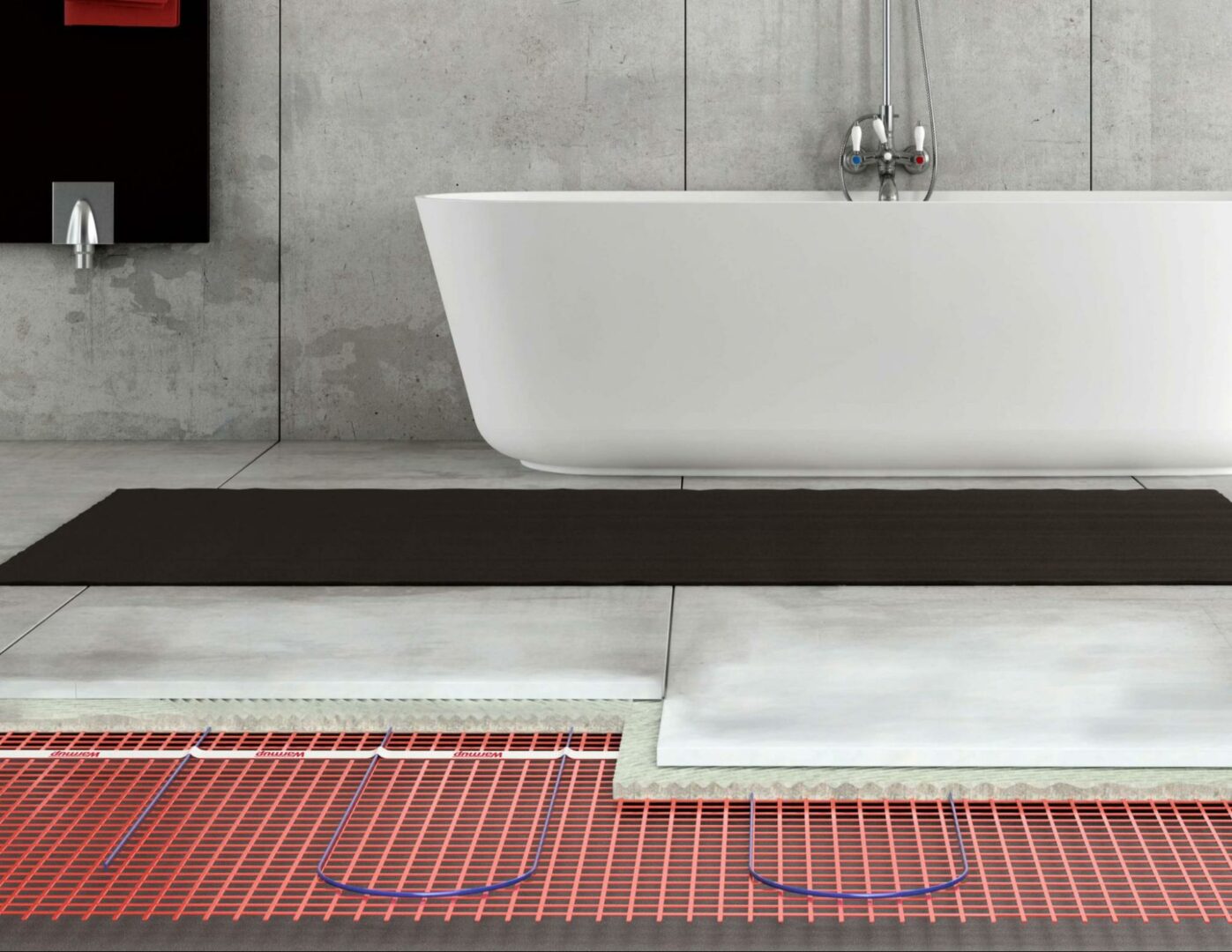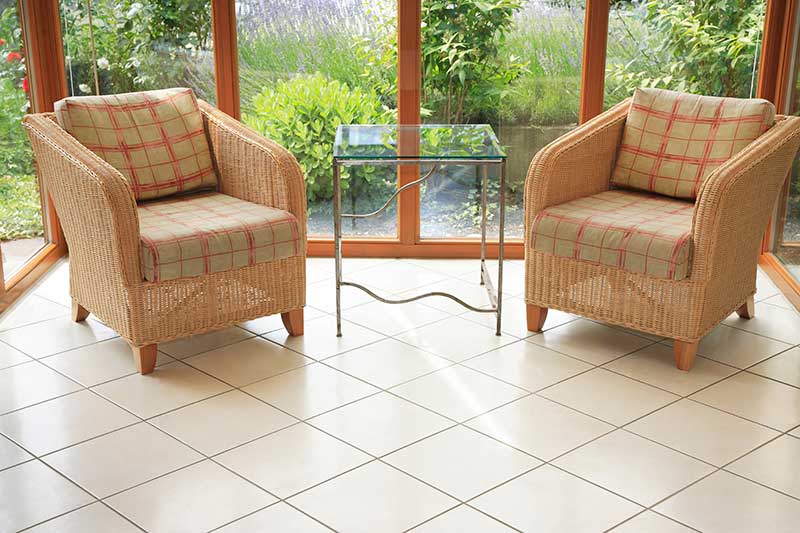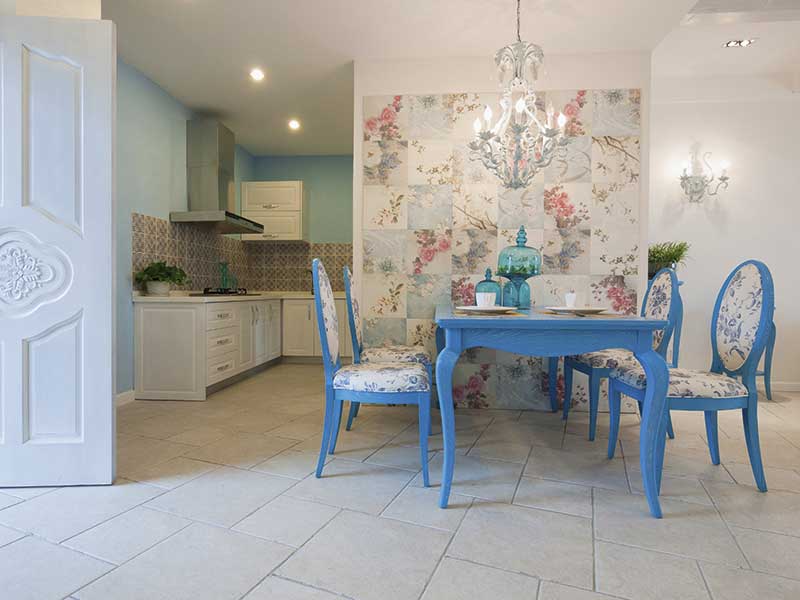Everybody wants high-efficiency equipment inside their homes. The fact is that more efficient appliances can save tons of money in utility bills, reduce your carbon footprint, and save significant energy.
One energy efficiency change to make is altering the heating system inside your home — or at least, adding a more efficient supplemental system. What is the most popular option?
Radiant Heating
Radiant floor heating consists of a series of heat cables that run below your finished floor to evenly distribute heat across the entire room.
Is electric or water underfloor heating the better option for radiant heating?
Here’s what you need to know.
How Do Underfloor Heating Systems Work?
Underfloor heating systems come in different styles, with two main power source options: water or electricity.
Regardless of how the heat gets generated, the concept of how they work is the same. Both rely on radiant energy that heats rooms from the ground up. As the radiant energy radiates upward, it travels around the room until it encounters obstructions like furniture, pets, or people, where it turns into warmth.
Electric Systems
Electric underfloor heating is available as thin, loose electrical heating cables or mats, which are thinner and embedded into the mat. These systems are compatible with virtually every type of flooring and are easier and cheaper to install.
Water-Based Systems
Water-based underfloor heating, also called hydronic systems or wet floor heating, uses small tubes or pipes, called circuits, that run underneath the floor. The circuits are connected to a boiler or heat pump, which heats water and pumps it into the pipes to create radiant heat.
The Difference Between Electric and Water Underfloor Heating
If radiant heating appeals to you, you must first consider your project: are you renovating or do you want it for a new build? Your answer can help you determine which system is best for you.
For Renovations
Home renovations are the perfect opportunity to install radiant heating, especially if you plan on updating the flooring in the space.
For these projects, electric radiant heating is the best option because your rooms have defined floor heights. With electric systems, cables and mats are relatively thin, so there isn’t any significant addition to floor height. Warmup options like the StickyMat System feature one of the thinnest cables at a mere 1/8″ thick.
New Builds
The pipes in hydronic systems are thicker than electrical cables, which results in a more significant difference in floor heights. For this reason, water-based systems are best for new builds. It will allow you to plan better and dedicate space to the boiler — a bulky but necessary piece of equipment for hydronic systems.
Electric Floor vs. Water-Based: How Long They Take To Install?
If you’re deciding between electric or water-based underfloor heating, another factor to consider is the time it takes to install each option, as installation times for water and electric underfloor heating can vary drastically. For instance:
Electric Systems
Generally, electric systems are easier and quicker to install because they have a significantly less complicated installation process. While total installation time depends on the project size, the type of electrical system, and the number of people working, it can take anywhere from a few hours to a few days.
Water-Based Systems
Water-based systems are an entirely different story. It is important to remember that water-based systems are complex to install and, therefore, consume more time during installation.
If you’re debating between electric or water underfloor heating, just know that it can take several days or weeks to completely install a water-based underfloor heating system. It also depends on the size of the project.
Wet vs. Dry Installation
When installing underfloor heating, it’s important to consider the installation type.
Underfloor heating systems can be installed using either a ‘wet’ or ‘dry’ method.
Most heating cables and mats, including StickyMat, require a wet installation, where the cables are embedded in a layer of concrete or thinset to operate correctly. However, Foil Mats are an exception, as they can be installed without the need for embedding, thinset, or a leveling compound.
Water-based systems nearly always require a wet installation, while dry methods, such as those used for certain electric mats, generally only need an adhesive or leveling compound.
Installation Cost Differences Between Electric and Water-Based Heating
When choosing a system, knowing the cost difference between a professional plumber and qualified electrician is a huge plus. Your own project parameters will dictate which is preferable. You can expect to pay around $50 – $100 per hour for a qualified contractor to install a heating system in your home.
Electric Systems
Electric floor heaters provide great value for money. Installing our Sticky Mat in a bathroom with 40 sqft of heated area including insulation and a Warmup Thermostat would be approximately $1,000 + tax. These costs do not factor in the flooring or floor installation, which will add to the costs.
Water-Based Systems
Hydronic systems are more expensive to install but cheaper to run in the long-term.
Electric vs. Water Underfloor Heating Maintenance Costs
One of the draws of underfloor heating, whether you choose electric or water underfloor heating, is the cost savings.
Both systems work at lower temperatures than traditional systems and use less energy. However, both options have differences in maintenance costs to consider.
Electric System Costs
After installation, you generally do not have to worry about maintenance for electric systems. That is, if the job is done correctly.
Water-Based System Costs
Water-based systems require regular maintenance for the boiler, which can be $100–$200 annually, depending on whether you need repairs or not.
Both floor heating systems can range from $1.50 to $7 per day to run.
Heat-Up Times For Both Electric and Water-Based Systems
How quickly an underfloor heating system heats up depends on a few factors. To name a few:
- House installation
- System size
- Heat loss
- The type of system
- Weather
With all the right variables, an electric heating system can reach optimal room temperatures in as little as 30 minutes. A water-based system, on the other hand, can take more time—possibly up to an hour.
To speed up the process with both systems, you can create heating schedules or use zone heating with smart controls. Another option is choosing a hybrid option, with electric heating upstairs and hydronic heating downstairs.
Use Warmup for Electric Floor Underfloor Heating
When it comes to underfloor heating, both electric or water-based systems provide unique benefits that make them suitable for different needs.
Electric systems are a straightforward, budget-friendly choice for any space. With Warmup’s expertise and customizable systems, you can achieve reliable, energy-efficient warmth throughout your home—year-round.
Interested in learning more about how Warmup can help you and your family keep your home warm?
Contact Warmup to start planning your project today!





![Thumbnail [200x250]](/wp-content/uploads/Indoor-Systems-Page-Image.png)
![Thumbnail [200x250]](/wp-content/uploads/image-13.png)
![Thumbnail [200x250]](/wp-content/uploads/Projects-Image.png)